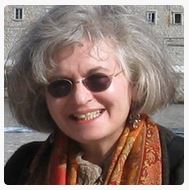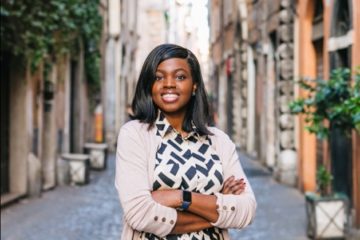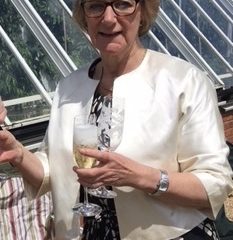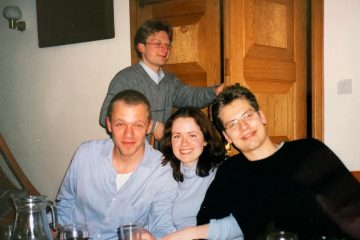S.A. Thornton (MA, PhD Cantab)
Matriculated 1982; BA 1983; MA 1985; PhD 1990
Besides getting a Ph.D. in Oriental Studies (yes, Oriental Studies, not Asian Studies), my goal was to have a real Cambridge experience. Like Scarlett O’Hara, I [was] going to have a good time!
The prospects did not look promising when my cab dropped me off that night in October 1982. It was late at night; there were no lights in the windows; no light anywhere. But, what I thought was the main door opened. When I saw an envelope with my name and room number on it pinned to the notice board, I knew I was in safe hands.

Although not a Catholic, I had spent two happy years at a Catholic university in the U.S., and St Edmund’s House had been established by the Howards, the preeminent Catholic family in England. On such happy coincidences (moving from one Catholic establishment to another) are such important decisions made. My luck held. The college was diverse and international (missionaries, Africans, Japanese, mature students like myself), babies crawled across the Junior Common Room floor, and only occasionally did a fight break out in the bar or in front of the TV set. When Magdalene men crawled through the window to get the cheapest drink in Cambridge, no one made a fuss. The place was easy-going and there were no snobs. Classmate Hamish Todd, now at the British Library, sat stunned with amazement at one of our parties: “This place is so friendly!” His college, Corpus Christi, was formal enough to maintain a high table.
I had a room in the old tower, whose windows rattled in the wind, and a curious, wall-hung heater gave off a powerful chemical stench. Three rooms shared a black and white Deco bathroom. In the golden years, the nuns had lived there: among other things, they baked for tea every day until their order summoned them back for retraining, and the members were reduced to packaged biscuits.
Much of our integration into St Edmund’s life was facilitated by the housekeeper, Mrs. Sylvia Merry. She taught me to make pie crusts with lard and for a couple of years I baked pumpkin pies for American Thanksgiving. She also let me use the Fellows Dining Room. Oh, the first time we had dinner in the Fellows Dining Room! We cooked in the students’ kitchen, set the table, and then got dressed – the men had all gone to Oxfam to buy dinner jackets and I knew I was in a different world! Mrs. Merry let us use the kitchen to make farewell spaghetti dinners for Lesley Dunn and David Collins. And we depended on her for so much: she got John Kalmus a sofa and me a mirror, which still hangs in my house – I had to slip it behind the last seat on the airplane when I took it home.
St Edmund’s had an eight and so I became a cox: mine were the only knees that would lie flat under the stroke’s oar. I duly went to training sessions and got up at six to rouse the rowers for practice. Our bow, Peter Burgess, is eighty now and a part-time vicar. We always kept in touch; this January, we (Pete, his wife Ros and I) met up in San Francisco when their cruise ship put into port). Our stroke, John Rossi, is responsible for the bursitis that long plagued my shoulder because he had to row as hard as he could because, as he claimed, he needed the exercise. John married Marienza Lio, who worked in the office, and he is now a perinatal brain surgeon in Houston. We all went to their wedding at the Church of Our Lady and the English Martyrs, another Cambridge beneficiary of the Howards’ patronage.
Between October 1982 and October 1988 — when I popped my thesis through the slot — and after, St Edmunds really was home, the place I came back to after teaching in Montana or doing research in Japan, or even for a summer to do research for an article. I would meet up with others: Jane Ross, back from Canada or Sierra Leone; Jon Kirby back from Ghana and his projects there; Jon James, back from Hawai’i or his orphanage in India. There was always someone around to give a big smile of recognition and a bright “Hello!”
And, yes, I did collect my degree—three of them, in fact: first non-Japanese woman (second woman) to collect a Ph.D. in Japanese. My research focused on three interrelated areas of Japanese narrative: medieval Buddhist propaganda, late-medieval epic, and the period film. In addition to several articles and book chapters, I wrote two books: Charisma and Community Formation in Medieval Japan: The Case of the Yugyo-ha (1300-1700) and of the 2007The Japanese Period Film: A Critical Analysis. I was an associate professor at Arizona State University and for about twenty years taught a range of courses on premodern Japan, religion, and film.


